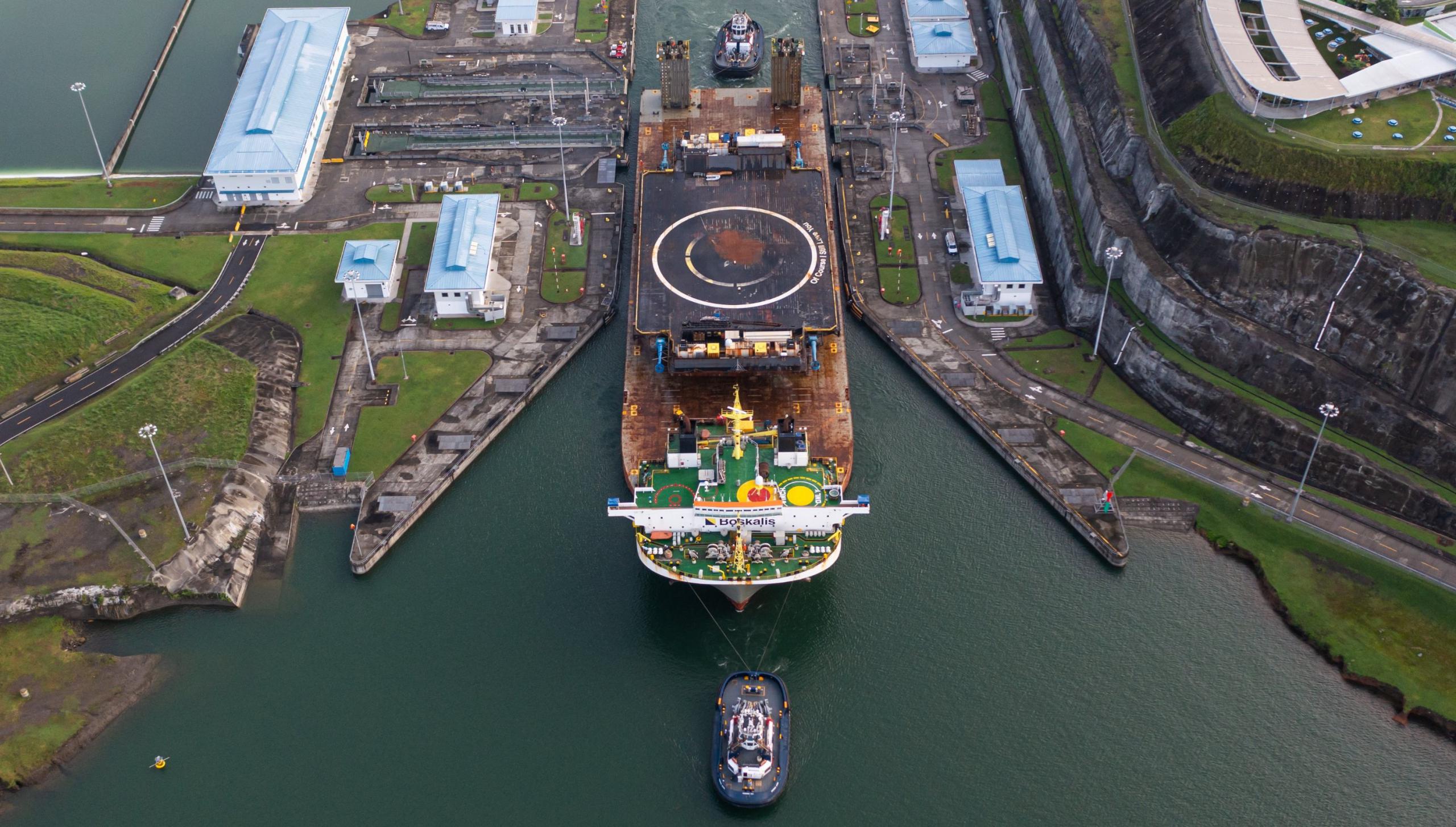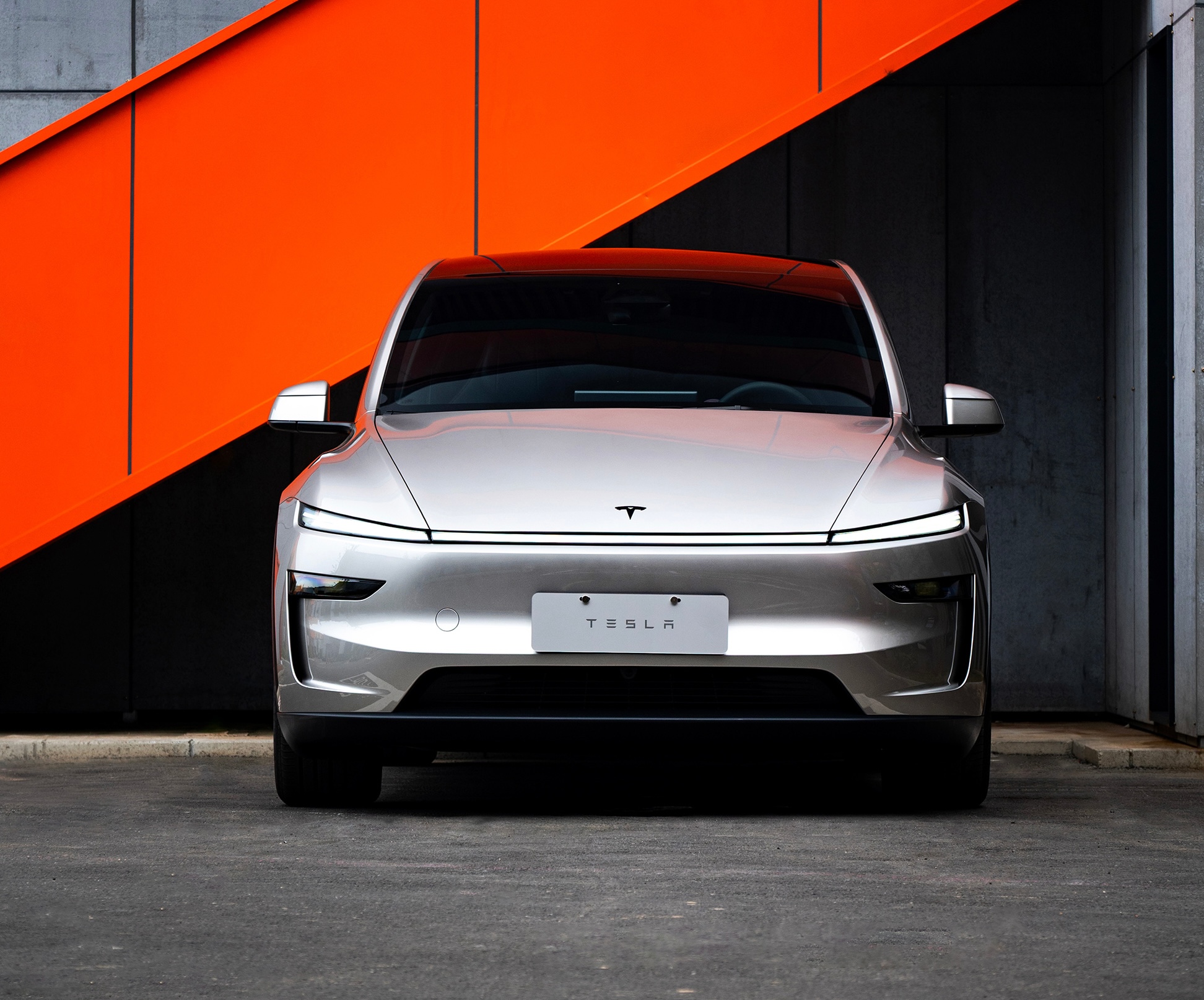

News
SpaceX drone ship sails through Panama Canal on the way to California
For the third time ever, one of SpaceX’s “autonomous spaceport drone ships” has successfully transited the Panama Canal on its way to a new home port.
This time around, similar to drone ship Just Read The Instructions’ (JRTI) original 2015 journey from a Louisiana shipyard to Port of Los Angeles, drone ship Of Course I Still Love You (OCISLY) headed west through the Panama Canal on June 25th, 2021. Unlikely JRTI, though, OCISLY was already operational and had supported almost four dozen successful Falcon booster landings before SpaceX decided to move the storied drone ship from Port Canaveral, Florida to Port of Long Beach, California.
A bit less than four years after Just Read The Instructions debuted on the West Coast, SpaceX sent the drone ship back east in August 2019, leaving the company’s Vandenberg Air/Space Force Base (VAFB) launch pad without an at-sea booster recovery capability ever since. Perhaps unsurprisingly, SpaceX has only launched once out of VAFB in the last two years. Now, though, the company intends to restart West Coast launches with a vengeance – and soon.
SpaceX’s primary motivation: a growing need to deliver a large number of Starlink satellites to polar – rather than semi-equatorial – orbits. Just last month, SpaceX’s 28th dedicated Starlink launch carried the constellation past the 1600-satellite milestones for the first time ever. Comprised of a little over 4400 satellites split between five orbital ‘shells,’ that milestone meant that the Starlink constellation’s first phase is now more than a third complete.
It also means that SpaceX has effectively finished the first of those five shells once all ~1584 satellites finish raising their orbits. A second nearly identical shell of 1584 satellites will eventually complete the constellation’s semi-equatorial foundation. In principle, those two shells of ~3200 satellites are enough to serve internet to ~99% of humanity.
Polar satellites will allow SpaceX to truly provide internet anywhere on Earth. Perhaps most importantly, polar Starlink satellites with optical (i.e. laser) interlinks would allow the constellation to serve uninterrupted, high-quality internet to all aircraft and ships – two major connectivity markets currently trapped with solutions that are either offer a terrible user experience or are extraordinarily expensive (and still mediocre).
Once operational on the West Coast, drone ship OCISLY should allow SpaceX to begin fleshing out Starlink’s polar shells with dedicated launches almost immediately. OCISLY is currently on tracked to arrive at Port of Long Beach around July 6th, leaving SpaceX more than three weeks to prepare for a polar Starlink launch before the month is out. Recently, FCC filings have also indicated that SpaceX intends to perform dedicated polar Starlink launches from California and Florida – though the latter missions will take a significant performance hit to make that happen.
According to Musk, Starlink is about six weeks away from achieving uninterrupted global coverage (excluding the poles) and six months away from offering uninterrupted coverage anywhere on Earth. It’s unclear how much of Starlink’s three polar shells will have to be completed before the constellation can truly provide uninterrupted coverage to those living in Earth’s polar regions but it’s likely that achieving that feat in six months will be a challenge.
Accounting for the inherently less efficient nature of polar launches and assuming approximately 50 Starlink satellites per polar launch, SpaceX will likely need to complete 12-20 polar missions to achieve full global coverage. Though unlikely, both of SpaceX’s first dedicated polar Starlink launches from the East and West Coasts could potentially occur in late July or early August.

Investor's Corner
Tesla gets bold Robotaxi prediction from Wall Street firm
Last week, Andrew Percoco took over Tesla analysis for Morgan Stanley from Adam Jonas, who covered the stock for years. Percoco seems to be less optimistic and bullish on Tesla shares, while still being fair and balanced in his analysis.

Tesla (NASDAQ: TSLA) received a bold Robotaxi prediction from Morgan Stanley, which anticipates a dramatic increase in the size of the company’s autonomous ride-hailing suite in the coming years.
Last week, Andrew Percoco took over Tesla analysis for Morgan Stanley from Adam Jonas, who covered the stock for years. Percoco seems to be less optimistic and bullish on Tesla shares, while still being fair and balanced in his analysis.
Percoco dug into the Robotaxi fleet and its expansion in the coming years in his latest note, released on Tuesday. The firm expects Tesla to increase the Robotaxi fleet size to 1,000 vehicles in 2026. However, that’s small-scale compared to what they expect from Tesla in a decade.
Tesla expands Robotaxi app access once again, this time on a global scale
By 2035, Morgan Stanley believes there will be one million Robotaxis on the road across multiple cities, a major jump and a considerable fleet size. We assume this means the fleet of vehicles Tesla will operate internally, and not including passenger-owned vehicles that could be added through software updates.
He also listed three specific catalysts that investors should pay attention to, as these will represent the company being on track to achieve its Robotaxi dreams:
- Opening Robotaxi to the public without a Safety Monitor. Timing is unclear, but it appears that Tesla is getting closer by the day.
- Improvement in safety metrics without the Safety Monitor. Tesla’s ability to improve its safety metrics as it scales miles driven without the Safety Monitor is imperative as it looks to scale in new states and cities in 2026.
- Cybercab start of production, targeted for April 2026. Tesla’s Cybercab is a purpose-built vehicle (no steering wheel or pedals, only two seats) that is expected to be produced through its state-of-the-art unboxed manufacturing process, offering further cost reductions and thus accelerating adoption over time.
Robotaxi stands to be one of Tesla’s most significant revenue contributors, especially as the company plans to continue expanding its ride-hailing service across the world in the coming years.
Its current deployment strategy is controlled and conservative to avoid any drastic and potentially program-ruining incidents.
So far, the program, which is active in Austin and the California Bay Area, has been widely successful.
News
Tesla Model Y L is gaining momentum in China’s premium segment
This suggests that the addition of the Model Y L to Tesla China’s lineup will not result in a case of cannibalization, but a possible case of “premiumization” instead.

Tesla’s domestic sales in China held steady in November with around 73,000 units delivered, but a closer look at the Model Y L’s numbers hints at an emerging shift towards pricier variants that could very well be boosting average selling prices and margins.
This suggests that the addition of the Model Y L to Tesla China’s lineup will not result in a case of cannibalization, but a possible case of “premiumization” instead.
Tesla China’s November domestic numbers
Data from the a Passenger Car Association (CPCA) indicated that Tesla China saw domestic deliveries of about 73,000 vehicles in November 2025. This number included 34,000 standard Model Y units, 26,000 Model 3 units, and 13,000 Model Y L units, as per industry watchers.
This means that the Model Y L accounted for roughly 27% of Tesla China’s total Model Y sales, despite the variant carrying a ~28% premium over the base RWD Model Y that is estimated to have dominated last year’s mix.
As per industry watcher @TSLAFanMtl, this suggests that Tesla China’s sales have moved towards more premium variants this year. Thus, direct year-over-year sales comparisons might miss the bigger picture. This is true even for the regular Model Y, as another premium trim, the Long Range RWD variant, was also added to the lineup this 2025.
November 2025 momentum
While Tesla China’s overall sales this year have seen challenges, the Model Y and Model 3 have remained strong sellers in the country. This is especially impressive as the Model Y and Model 3 are premium-priced vehicles, and they compete in the world’s most competitive electric vehicle market. Tesla China is also yet to roll out the latest capabilities of FSD in China, which means that its vehicles in the country could not tap into their latest capabilities yet.
Aggregated results from November suggest that the Tesla Model Y took the crown as China’s #1 best-selling SUV during the month, with roughly 34,000 deliveries. With the Model Y L, this number is even higher. The Tesla Model 3 also had a stellar month, seeing 25,700 deliveries during November 2025.
Cybertruck
Tesla Cybertruck earns IIHS Top Safety Pick+ award
To commemorate the accolade, the official Cybertruck account celebrated the milestone on X.

The Tesla Cybertruck has achieved the Insurance Institute for Highway Safety’s (IIHS) highest honor, earning a Top Safety Pick+ rating for 2025 models built after April 2025.
The full-size electric pickup truck’s safety rating is partly due to the vehicle’s strong performance in updated crash tests, superior front crash prevention, and effective headlights, among other factors. To commemorate the accolade, the official Cybertruck account celebrated the milestone on X.
Cybertruck’s IIHS rating
As per the IIHS, beginning with 2025 Cybertruck models built after April 2025, changes were made to the front underbody structure and footwell to improve occupant safety in driver-side and passenger-side small overlap front crashes. The moderate overlap front test earned a good rating, and the updated side impact test also received stellar marks.
The Cybertruck’s front crash prevention earned a good rating in pedestrian scenarios, with the standard Collision Avoidance Assist avoiding collisions in day and night tests across child, adult crossing, and parallel paths. Headlights with high-beam assist compensated for limitations, contributing to the top award.
Safest and most autonomous pickup
The Cybertruck is one of only two full-size pickups to receive the IIHS’ Top Safety Pick + rating. It is also the only one equipped with advanced self-driving features via Tesla’s Full Self-Driving (Supervised) system. Thanks to FSD, the Cybertruck can navigate inner city streets and highways on its own with minimal supervision, adding a layer of safety beyond passive crash protection.
Community reactions poured in, with users praising the vehicle’s safety rating amidst skepticism from critics. Tesla itself highlighted this by starting its X post with a short clip of a Cybertruck critic who predicted that the vehicle will likely not pass safety tests. The only question now is, of course, if the vehicle’s Top Safety Pick+ rating from the IIHS will help the Cybertruck improve its sales.








